Fund/Build/Scale
After working for years in early-stage startups and as a journalist, here are three hard truths I’ve learned: 1. Success in Silicon Valley hinges on connections, hard work and luck. 2. Startups often fail because founders lack fundamental business knowledge. 3. Real, actionable advice comes from those who’ve actually done it. There’s no such thing as “founder DNA.” If you’re willing to take on risk and invest years of your life in something that has maybe a 10% chance of paying off — less if you’re a woman or person of color — you can be a startup founder. Here’s why I founded Fund/Build/Scale: 1. To help founders make fewer mistakes. 2. To share successful strategies that can accelerate your go-to-market journey. 3. To inspire more people to see themselves as potential founders. There’s a lot of overlooked talent out there, and we are missing out. This podcast is for anyone who’s interested in learning the basic skills required to launch a startup, secure initial funding and transform an idea into a sustainable business. I’m talking to guests about everything: finding a co-founder, conducting customer discovery, recruiting early employees, developing a PLG strategy, fundraising when you’re outside a major tech hub — all of it. Interested? Subscribe to Fund/Build/Scale on all major platforms and follow the podcast on LinkedIn to get articles, excerpts, transcripts and more. Fund/Build/Scale is a production of Truth and Soul Media LLC.
Episodes
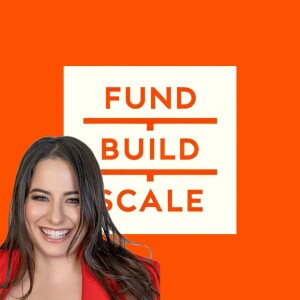
Wednesday Aug 28, 2024
Wednesday Aug 28, 2024
I met Fortune Senior Finance Reporter Allie Garfinkle in February 2024 at an event for comms professionals.
She had just taken over the Term Sheet daily deals newsletter covering startups, venture capital, M&A, trends and pretty much anything tech-related.
When news broke right after our panel that Reddit was filing to go public, she didn’t have a desk or a chair, so she grabbed her laptop, sat on the floor with her back to the wall and began drafting her next column.
She wasn’t stressed out — she seemed excited and laser-focused.
Term Sheet comes out five times each week which means she’s up and reviewing reader tips between 4am and 6am. “I actually write every day because I want it to feel urgent. It's sort of this odd equivalent of being journalistically naked,” she said.
A lot of tech reporters use their platforms to make predictions, pick winners and embroider their opinions, but Allie tends to play it right down the middle.
“The thing that I probably excel at is sort of being somewhere between neither being a cheerleader nor being an incredibly harsh critic,” she said. “I actually try to approach every person in front of me on their terms, like, “okay, who are you?”
Episode breakdown
(3:49) “I started at Fortune in January. New year, new job. I'd actually never written a daily newsletter before, ever.”
(7:00) “I think there are great hot takers in this business. But I don't think I will ever be one of them.”
(9:27) “What's the bar for including things? I try to put myself in the position of the readers.”
(11:57) “The Reddit IPO — actually the day we met — I had another story in the can. I recall this.”
(14:40) “There's a certain kind of conventional story of success I find incredibly boring.”
(16:53) “There's sometimes stories where I don't know if I'm the right person.”
(17:13) Why Elon Musk just isn’t that interesting to write about.
(19:07) How Allie really feels about writing tech trend pieces.
(21:44) She explains how Stephen Sondheim’s rules for songwriting also apply to tech reporting.
(25:04) Allie’s advice for early-stage founders who are fundraising in 2024.
(29:04) “I don't want to work with jerks. This is something that I've had to learn the hard way over time.”
Links
Allie Garfinkle, Senior Finance Reporter, Fortunealexandra.garfinkle@fortune.com
Fortune articles by Allie GarfinkleReddit’s S-1 paints the picture of a company with a complicated past, present, and future
Poor Charlie’s Almanack: The Essential Wit and Wisdom of Charles T. Munger
Thanks for listening!
– Walter.
fundbuildscale@gmail.com
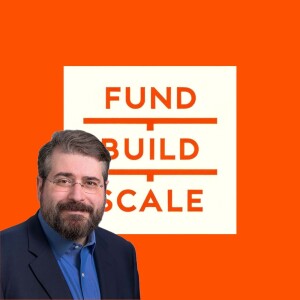
Monday Aug 26, 2024
Monday Aug 26, 2024
Before Igor Jablokov was CEO and founder of Pryon, he worked with Apple on a prototype of Siri. He also founded a speech recognition company that Amazon acquired to develop its Alexa AI and Echo devices.
He joined me on the podcast to talk about the evolution and challenges of building AI technologies and companies, different phases of startup growth, and how AI is transforming enterprise software procurement.
Igor also offered his insights on the current AI hype cycle, explained the concept of “knowledge friction,” and shared some personal anecdotes and observations about achieving enduring entrepreneurial success in the AI domain.
Runtime: 42:55
Episode breakdown
(2:42) “We were their first AI-related acquisition that birthed what many people know as Alexa.”
(6:44) What happens when you can’t commercialize the technology you’ve created?
(9:11) How Pryon originated the concept of “knowledge friction.”
(14:33) Igor deconstructs the three main types of founders working in AI today.
(18:38) Where he thinks we are in the current AI hype cycle.
(21:14) “Before ChatGPT, it was a desert and very few of us survive in the desert with a small amount of water.”
(23:06) Inside Pryon’s September 2023 $100M Series B round.
(25:26) Why early-stage AI startups have a major advantage over legacy tech companies.
(28:07) Founders need “practical experience in an industry that eventually you're going to be a part of.”
(35:00) “Tech is as perishable as fruits and vegetables you can procure from Trader Joe's.”
(38:58) Questions Igor would ask the CEO if he was interviewing for a role with a startup.
Links
Igor Jablokov, CEO, Pryon
Pryon
Pryon Closes $100 Million Series B Round Led by Thomas Tull’s US Innovative Technology Fund
Amazon.com Acquires Voice Recognition Start-up Yap
Follow Fund/Build/Scale on Substack
Thanks for listening!
– Walter.
fundbuildscale@gmail.com
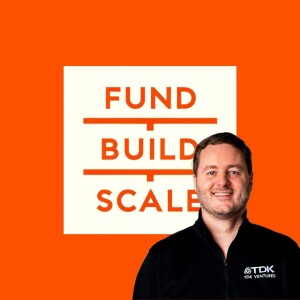
Sunday Aug 25, 2024
Sunday Aug 25, 2024
If you're building a first-to-market solution using emerging technology that could meaningfully contribute to society and generate a 50x return, TDK Ventures President Nicolas Sauvage wants to hear from you.
I invited him on the podcast to learn about TDK Ventures’ approach to corporate VC, which uses backcasting to identify ideal future technologies and then invest in entrepreneurs who are working towards those goals.
Portfolio companies include startups that make things like flying taxis, batteries from reclaimed materials and technology for nuclear fusion.
“There's no doubt in my mind that no one can forecast the future,” said Nicolas.
“But what we can do, all of us, is to dream of an ideal future, then backcast from there, and look at what are the gaps to get to this ideal future.”
Runtime: 43:31
Episode breakdown
4:50: “The origin story of TDK Ventures was three interactions in classes from a Stanford executive program in 2018.”
7:59: Nicolas explains TDK Ventures’ investment scope.
9:14: “No one can forecast the future,” which is where backcasting comes in.
11:39: “Right now, we deploy through two different funds.”
14:07: Inside TDK Ventures’ deal flow and investment thesis.
16:14: “For any megatrends, we're looking at $10B+ TAM. It could be zero TAM today.”
20:31: How do you calculate TAM for emerging technology?
22:17: When it comes to due diligence, “we are prepared. We know what to look for.”
25:23: Why he’s open to revisiting pitches he rejected once their technology matures.
29:59: Common misconceptions about corporate venture capital.
33:40: “How do we judge when is the right time? That really depends case by case.”
36:09: How TDK supports early-stage deep tech founders with academic backgrounds.
42:06: “I like to see entrepreneurs coming with a superpower; something that they're exceptional at that no one else is.”
Links
Nicolas Sauvage, president, TDK VenturesEntrepreneurship: A superhero’s journey
Corporate VC is booming, but is it what your startup needs?
TDK VenturesDeep Explorations
Autoflight
Ascend Elements
SPAN
Divirod
TypeOne Energy
Starship Technologies
AM Batteries
Metalenz
Jesper Sorenson, Senior Associate Dean for Academic Affairs, Stanford University Graduate School of Business
Ilya Strebuleav, professor, Stanford University Graduate School of BusinessThe Venture Mindset: How to Make Smarter Bets and Achieve Extraordinary Growth
Paul Holland, corporate venture practice managing director, Mach49
Thanks for listening!
– Walter.
fundbuildscale@gmail.com
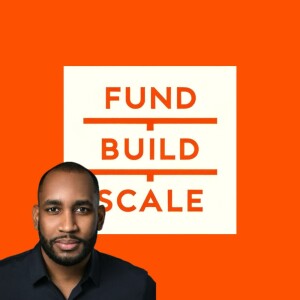
Thursday Aug 22, 2024
Thursday Aug 22, 2024
In this episode of Fund/Build/Scale, host Walter Thompson engages in a comprehensive discussion with Hantz Févry, co-founder and CEO of Stoovo, an AI-based geospatial data company.
Hantz shares invaluable insights into separating one's identity from their job, the importance of rapid execution in startups, and the journey from working at Google to launching his own company.
This episode targets tech workers aspiring to start their own businesses and immigrants in the U.S. on worker visas, highlighting the unique challenges and strategies for achieving entrepreneurial success. Hantz speaks on redefining success, Stoovo's pivotal evolution post-pandemic, and the critical importance of profitability and investment strategy.
Tune in to gain practical advice and inspiration for your startup journey.
Runtime: 36:23
Episode breakdown
2:26: “We realized that when it comes to the last hundred meters, there's a big gap.”
6:34: “I don't like to call it a pivot. I like to say that Stoovo evolved.”
8:35: “I do not think pivoting is a bad word. Actually, I think it's a sign of resilience.”
10:55: “By working together, it was very natural for the whole team to transition.”
15:07: “I was working at a company called Google, but I am Hantz, I'm not a Googler.”
17:10: “You might get there. You might not, but at least you were courageous enough to try.”
18:36: How Hantz defines work-life balance
22:20: Before he could launch Stoovo, “I had to wait until I had my green card.”
25:16: “I didn't have a uncle here, I do not have that famous garage where I can just sleep”
27:37: How Hantz and his co-founder Pierre connected with early investors
29:19: His framework for assessing founder-investor fit
33:38: Fundraising advice for Black and immigrant founders
34:32: Why “you don't need to be in Silicon Valley to build a business.”
Links
Hantz Fevry, CEO/co-founder, Stoovo
Stoovo (website)
Stoovo app (Google Play)
Stoovo app (Apple
500 Global
Le labyrinthe des égarés: L'Occident et ses adversaires, Amin Maalouf
Subscribe to Fund/Build/Scale
🎧 Apple Podcasts: https://podcasts.apple.com/us/podcast/fund-build-scale/id1719488387
🎧 Spotify: https://open.spotify.com/show/0EbC8PTUSfpZ4USPC9ErnN
Follow Fund/Build/Scale on LinkedIn
Thanks for listening!
– Walter.
fundbuildscale@gmail.com
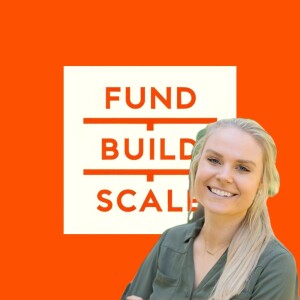
Sunday Aug 04, 2024
Sunday Aug 04, 2024
Enterprise companies like Salesforce, Oracle and Cisco use sales-led growth to drive revenue and build relationships with potential customers.
Early-stage startups can't afford to rely on traditional sales and marketing, which is where product-led growth (PLG) comes in. Instead of creating slick sales collateral and hiring aggressive go-getters, PLG presents the product itself as the primary driver for customer acquisition, expansion and conversion.
"It's an end-user-based revenue motion," said Laura Schaffer, VP of Growth at analytics platform Amplitude. "So you're trying to ultimately drive revenue growth by focusing on the end user."
I invited her on the podcast to talk about how founding teams with limited resources can build a robust PLG framework that gathers actionable data and drives engagement.
"If you think of payment, it's just a kind of friction. Just like completing a signup is friction. Just like learning a new product is friction," said Laura. "Payment and pricing and charging is just another friction."
Episode breakdown
Introduction to Laura Schaffer and her background in sales and growth
Defining Product-Led Growth (PLG) as an end-user based revenue motion
Key components of PLG: Acquisition, Monetization, Retention
Initial steps for startups adopting PLG with limited resources
“There are bad, high-friction questions, and then there's good questions.”
Identifying and prioritizing target personas based on user engagement
Minimizing bias by focusing on user problems and using quantitative data
Strategies for moving from freemium to paid versions based on engagement signals
Using free tools like Google Drive and Amplitude for tracking and data collection
Techniques for embedding personas into organizational culture for alignment
Avoiding vanity metrics and ensuring engagement metrics are linked to value
Laura’s advice on maintaining focus and prioritizing effectively for growth
Links
Laura Schaffer, VP Growth, Amplitude
Amplitude
Amplitude glossary of common terms
How to run painted door tests that don’t piss off your users, CommandBarElena’s Growth Scoop [Substack newsletter]
Product-led Geek [Ben Williams’ newsletter]
Follow Fund/Build/Scale on LinkedIn
Subscribe to FBS on Substack
Thanks for listening!
– Walter.
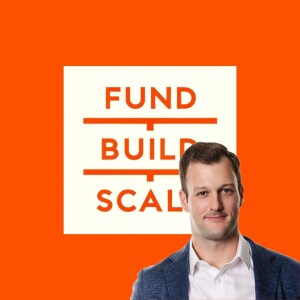
Sunday Aug 04, 2024
Sunday Aug 04, 2024
In this episode of Fund/Build/Scale, I interviewed Amex Ventures Managing Director Kevin Weber about some of the nuances between traditional VC and corporate venture capital.
It’s quite a mix: he’s looking for founders who can create value for individual American Express cardholders and the firm itself, so we talked about what types of opportunities he’s looking for, some of the problems he’s trying to solve, and the role risk plays in pushing organizational boundaries.
“In many cases, I actually want to take more risk in some of the investments that I'm going to make because that risk and the investment that I'm making for the potential opportunity that I could have to American Express is likely worth the bet,” he said.
If you’re interested in pitching Amex Ventures or another CVC, listen in for insights on fintech, AI, and e-commerce investments, the importance of aligning startup strategies with corporate goals, and key advice for first-time founders on fundraising and market positioning.
Episode summary
00:19 Meet Kevin Weber: Amex Ventures' Managing Director
00:42 The Role of Corporate Venture Capital
01:24 Kevin's Career Journey
02:53 Amex Ventures' Investment Strategy
03:06 Differences Between Corporate and Traditional VC
04:05 Strategic Value and Partnerships
05:30 Focus Areas and Portfolio Companies
07:49 AI and Machine Learning in Venture Capital
09:29 Investment Process and Founder Relationships
15:11 Turning Investments into Partnerships
20:23 Collaborating with Businesses to Achieve Goals
20:39 Addressing Pain Points and Future Trends
21:10 Focus on AI
22:23 Business Goals and Fraud Prevention
24:09 Investment Strategies and Pivots
25:37 Exit Strategies and Acquisition Policies
31:40 Working with Accelerators and Incubators
34:44 Advice for First-Time Founders
39:07 Risk Tolerance in Corporate Venture Capital
Links
Kevin Weber, Managing Director, Amex Ventures
Amex Ventures
Weber joins Amex Ventures, 6/12/2023, Global Corporate Venturing Leadership Society
Jobs at Amex Ventures
Goodie Nation
Follow Fund/Build/Scale on LinkedIn
Subscribe to FBS on Substack
Thanks for listening!
– Walter.
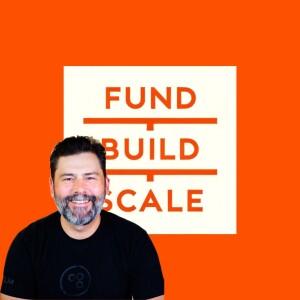
Monday Jul 29, 2024
Monday Jul 29, 2024
Everyone's looking for ways to implement AI solutions, but integrating them into existing systems means entering uncharted territory.
Despite the hype cycle, a majority of enterprise customers “are spending 70-80% of their capacity maintaining legacy application infrastructure,” said Jeremiah Stone, CTO of SnapLogic.
As a result, these companies often lack the necessary talent to effectively assess or integrate AI, making compliance and security the two biggest challenges for AI-first founders.
To overcome these and other adoption barriers, early-stage CEOs need to become educators and great listeners before they can ever act as salespeople.
In this episode, I interviewed Jeremiah to learn more about identifying and overcoming barriers to AI adoption, strategies for effective customer engagement and the importance of transparency and iterative experimentation in AI development.
Episode summary
Security and compliance “are the two things that are challenging for adoption right now.”
Before selling AI solutions, founders need to listen to (and educate) potential customers.
“Enterprises are spending 70-80% of their capacity maintaining legacy application infrastructure.”
The risk of data breaches and bad customer outcomes makes enterprises cautious.
Focus on solving unique problems AI can address better than existing solutions.
Build trust by starting discussions with security, compliance, and risk frameworks.
Innovate openly to demystify AI for customers.
Make sure your team is ready to answer typical security and compliance questions.
Maintain discipline in focusing on scalable solutions rather than niche problems.
“You have to create your own talent and upskill your data engineering team.”
“Experiment weekly on the things that look promising and treat it as an iterative process.”
Be transparent and involve customers early in your development process.
Links
Jeremiah Stone, CTO, SnapLogic
SnapLogic company overview
SnapLogic Names Jeremiah Stone CTO
Fund/Build/Scale on LinkedIn
Fund/Build/Scale on Substack
Thanks for listening!
-- Walter.
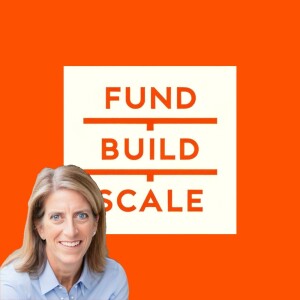
Monday Jul 22, 2024
Monday Jul 22, 2024
Deb Kemper is a managing partner of Golden Seeds Ventures, a firm that focuses on backing early-stage, women-led companies.
She joined me on the podcast to share tactics with founders who want to build networks with investors outside of Silicon Valley and discuss some of the challenges facing anyone seeking follow-on funding these days.
We also talked about the criteria investors use to gauge the strengths of teams and their ideas.
“I know some investor groups do full-on psychological assessments of founders and their teams,” she said, noting that she prefers to learn through observation. One red flag: entrepreneurs who can’t easily explain their ideas aren’t ready to work with investors.
“If I go to a networking event and someone can't tell me in 60 seconds what they do — or even less — I'm done,” said Deb.
“They just want to talk to you and tell you everything about their company. And I walk away saying, “I still don't know what they do.’”
Episode breakdown
How Golden Seeds Ventures works with Golden Seeds Angel Network
“You have to be really solving a customer problem in a way that we see is unique.”
Strategies for fundraising, extending runway + adapting to the current investment climate
Founders/companies that might benefit more from funding methods besides traditional VC
Why finding a co-founder is more about serendipity than process
How Golden Seeds gauges a team’s domain expertise/understanding of market needs
Deb talks about the need for products to solve substantial problems and not just be quick fixes
Common pitfalls for founders, especially around financial management and market positioning
“I don't think that's of any use to have a rubber stamp board.”
Deb’s perspective on the current state of AI investments and the potential for startups outside major tech hubs
Links
Deb Kemper, managing partner, Golden Seeds Ventures
Golden Seeds Ventures
Utah Tech Week 2024
Fund/Build/Scale on LinkedIn
Fund/Build/Scale on Substack
Thanks for listening!
– Walter.
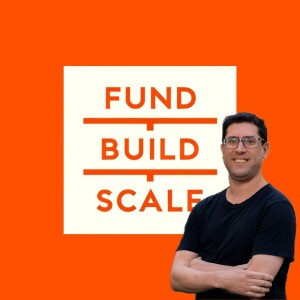
Saturday Jul 20, 2024
Saturday Jul 20, 2024
One of the first interviews I did for the podcast was with Renen Hallak, CEO and founder of AI infrastructure company VAST Data.
The company launched in 2019, and three years later, it was ranked No. 5 on the Deloitte Technology Fast 500™. Today, its customer base includes massive organizations like Disney, Verizon, the US Air Force and the US Department of Energy. It’s one of the fastest-growing companies in its sector.
You can probably tell I was a little nervous.
Most of the questions I asked covered VAST Data’s first eighteen months: his customer discovery process, how his team worked to gain traction and build credibility with clients and also, why he looked for a co-founder who could take over go-to-market strategy.
Renen also spoke frankly about his previous experiences launching startups, which weren’t as successful.
When it came to fundraising, “I did not know how to do it,” he said. “I didn't understand the game. I thought that VCs judge ideas based on the merit of the idea. In fact, I think most of the weight goes to who you are, what you've done, and who vouches for you, in terms of who they choose to invest in.”
If you’re an academic or a worker in a technical role who’s thinking about starting up, you’ll definitely want to listen to this episode.
LINKS
Renen Hallak, CEO/founder, VAST Data
VAST Data
VAST Data Ranked 5th Among North America’s Fastest-Growing Technology Companies [press release]
Fund/Build/Scale on LinkedIn
Fund/Build/Scale on Substack
EPISODE BREAKDOWN
What VAST Data does
Renen's career shift and the early challenges he faced starting VAST
Why his previous fundraising failed: “I did not know how to do it. I didn't understand the game.”
Customer discovery processes and early challenges in gaining traction/building credibility
What he learned from failure about fundraising and VC dynamics
Strategies for creating innovative products that withstand competition from big players
How VAST used customer feedback to shape their product development
The process and timing of building a team, particularly focusing on sales + marketing
Initial customer acquisition and how VAST secured large-scale data users early on
From zero -> $1 million ARR -> $10M ARR in about 18 months
How VAST anticipates/integrates future AI trends into its pipeline + business model
Renen’s personal advice for new founders transitioning from technical roles to CEO positions
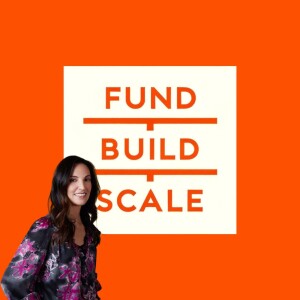
Saturday Jul 13, 2024
Saturday Jul 13, 2024
Viviana Faga is general partner at Felicis, a venture firm that invests in seed to Series B startups in several sectors. Since its founding in 2006, the company has backed breakout companies like Adyen, Canva, Shopify and Runway.
Because she’s a former operator with experience in positioning, branding and go-to-market strategy, I asked her to come on Fund/Build/Scale to talk about how she evaluates seed-stage AI investments and share some of the tactics she’s using to help founders “really focus on this idea of a defensible brand.”
Episode breakdown:
A look at Felicis’ strategy of investing across different sectors and stages
Viviana outlines areas of interest within AI and clarifies typical investment size
“If you're a traditional SaaS company, I think it's going to be very hard.”
How AI startups differ from traditional SaaS in terms of growth/funding opportunities
“I think TAM is just a false predictor in either direction.”
“It's hard to start an AI company if you have not been in research or in academia,”
“Every time there's a hot AI company, there's 15 new YC companies going after that problem 3-6 months later.”
“Marketing is formulaic, it really shouldn’t scare anyone.”
Questions AI founders should ask investors to ensure alignment and set expectations
Viviana shares her resources for keeping up with the latest developments in AI
“I always ask teams, ‘what's going to happen in five years that will determine your success, and walk me through it.’”
Links:
Viviana Faga, general partner, Felicis
Felicis
NeurIPS 2024 Conference on Neural Information Processing Systems
No Priors podcast
Thanks for listening,
– Walter.
FBS on Substack
LinkedIn

How to take an AI startup from idea to reality
The first episode of Fund/Build/Scale will be available in February 2024.
For transcripts, show updates and other exclusive content, follow “Fund/Build/Scale” on:
- Substack: https://fundbuildscale.substack.com
- LinkedIn: https://www.linkedin.com/groups/14341226
- YouTube: https://youtube.com/@FBSpodcast
- Eventbrite: http://fundbuildscale.eventbrite.com







